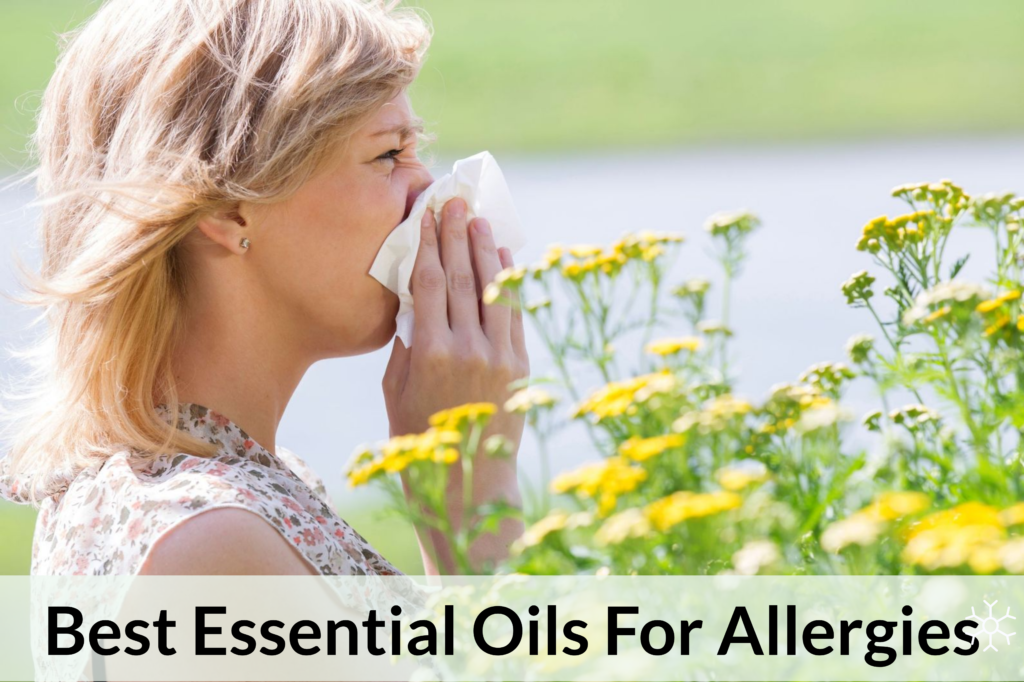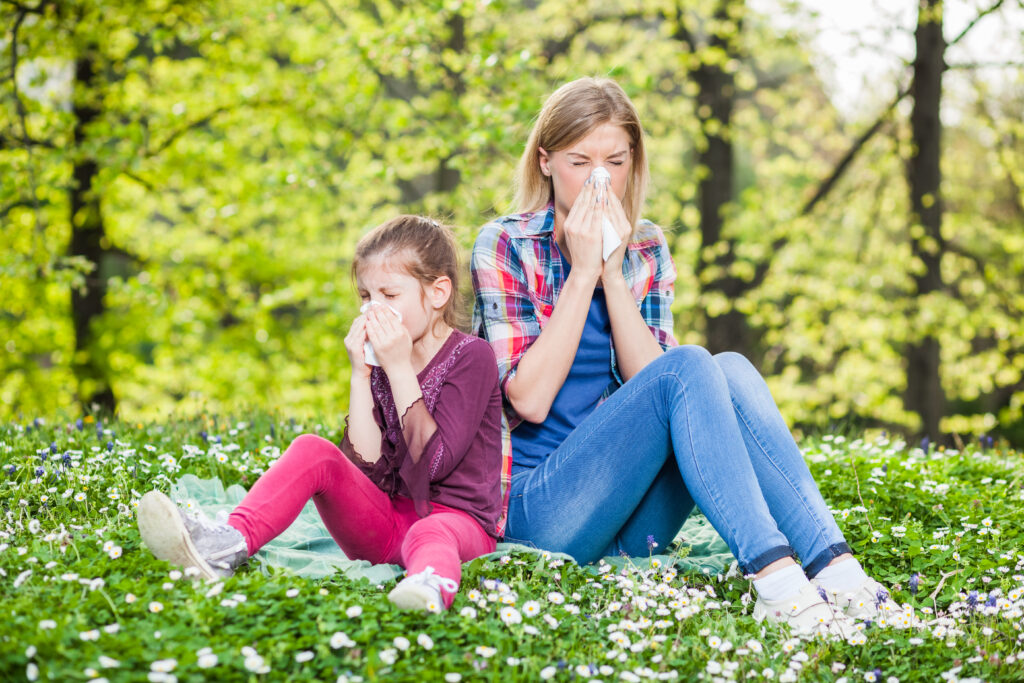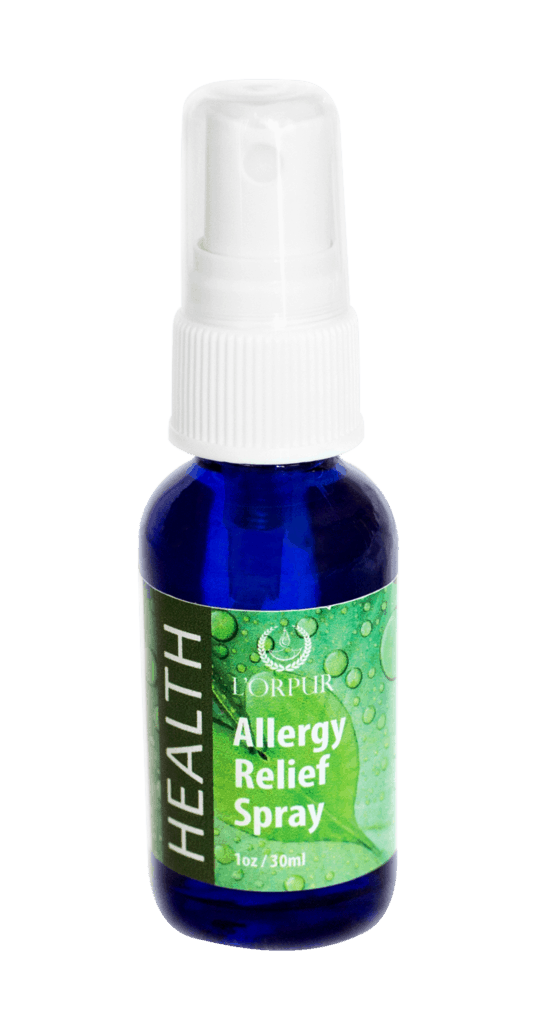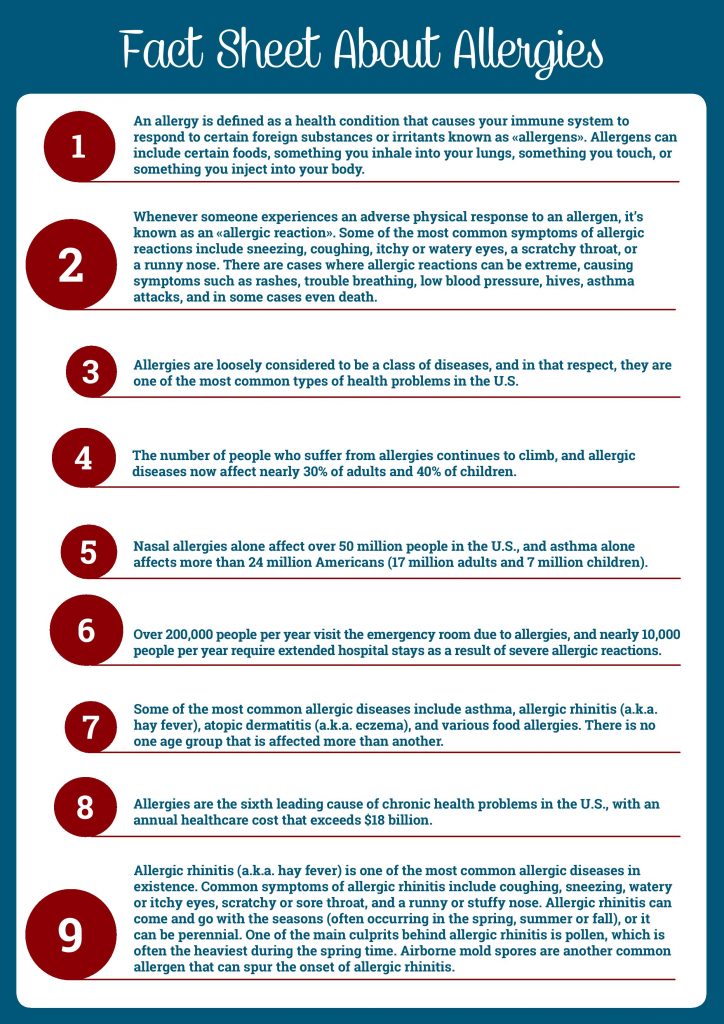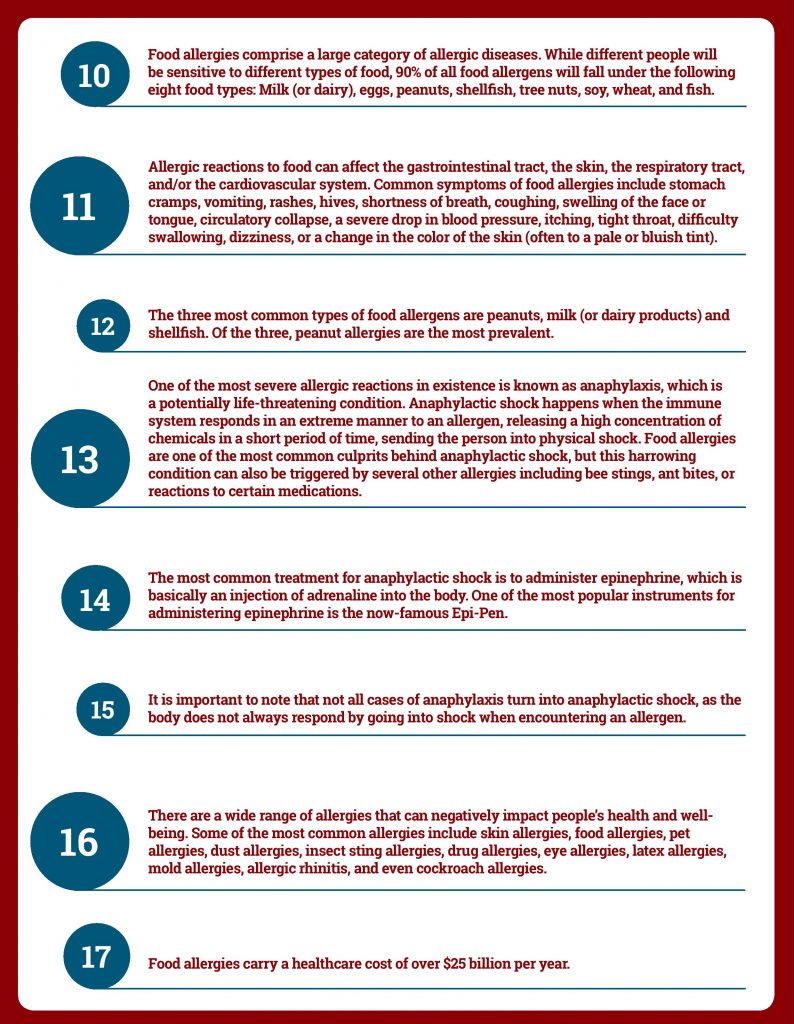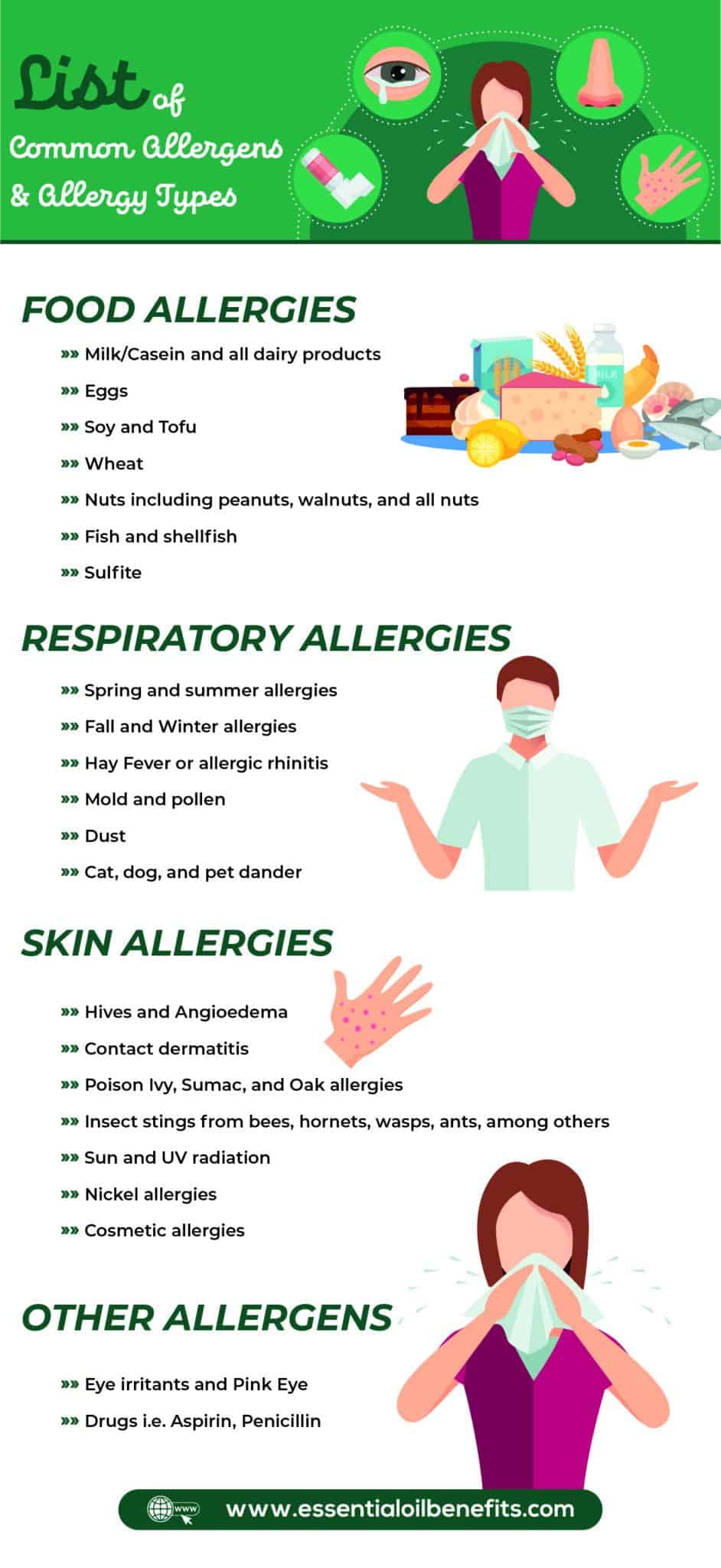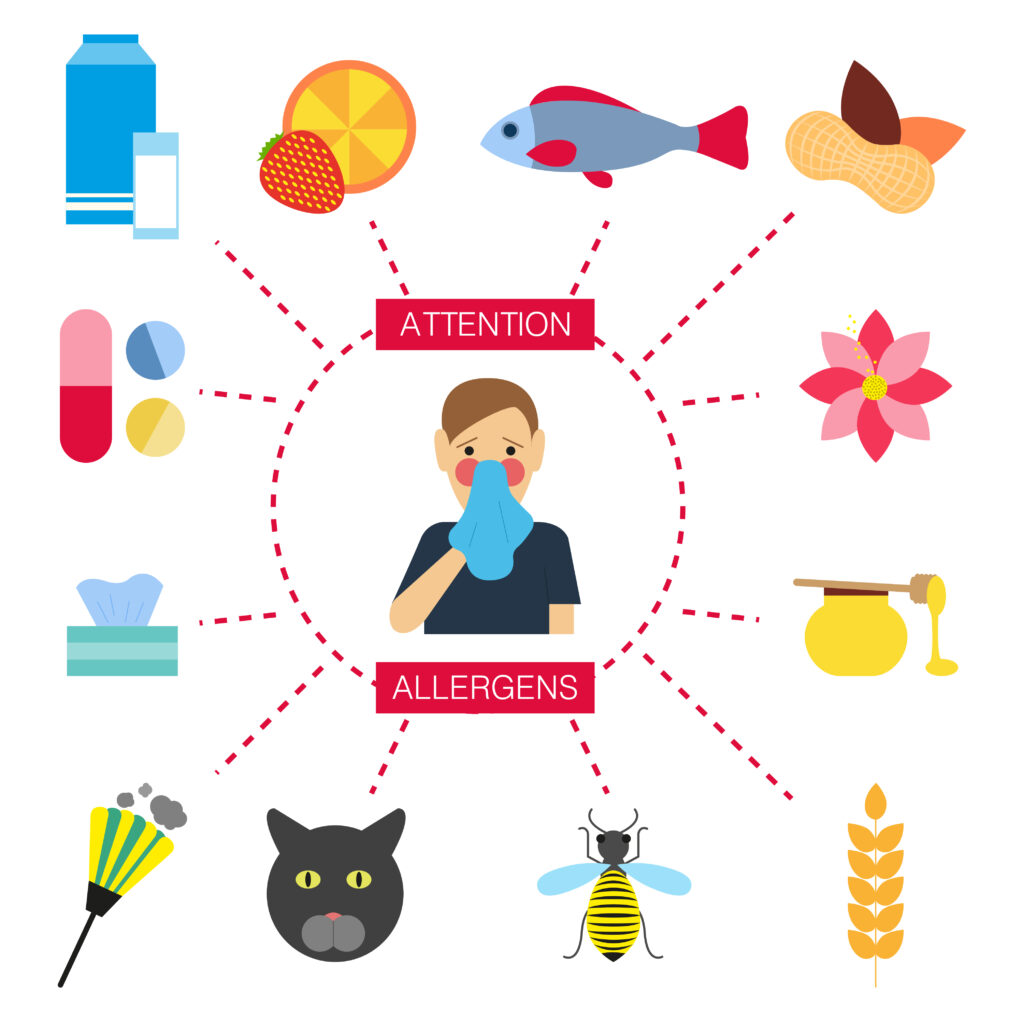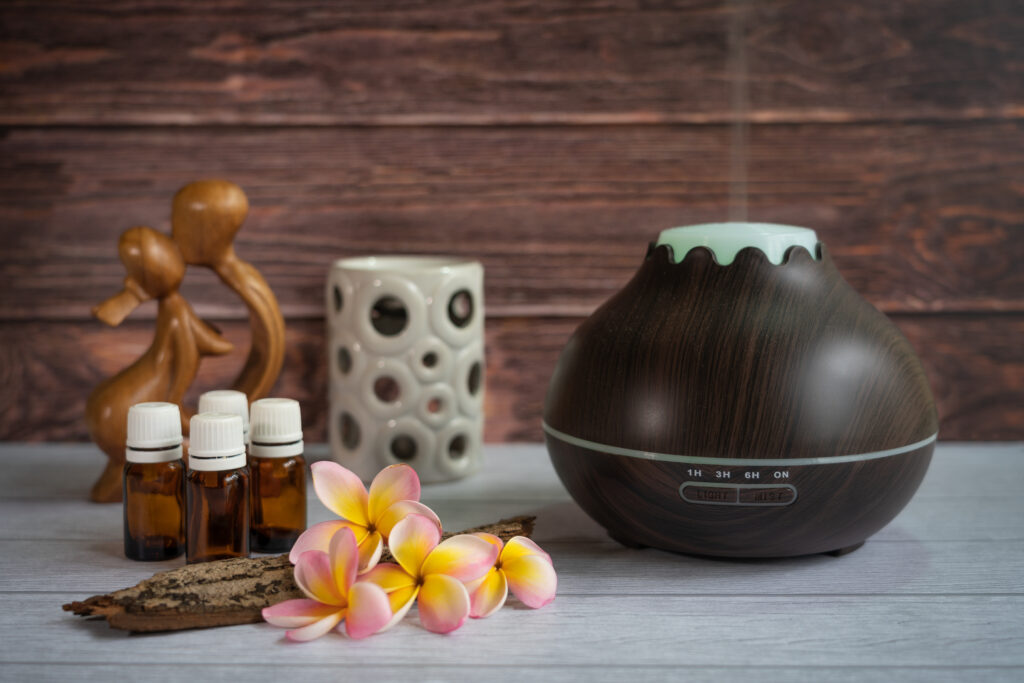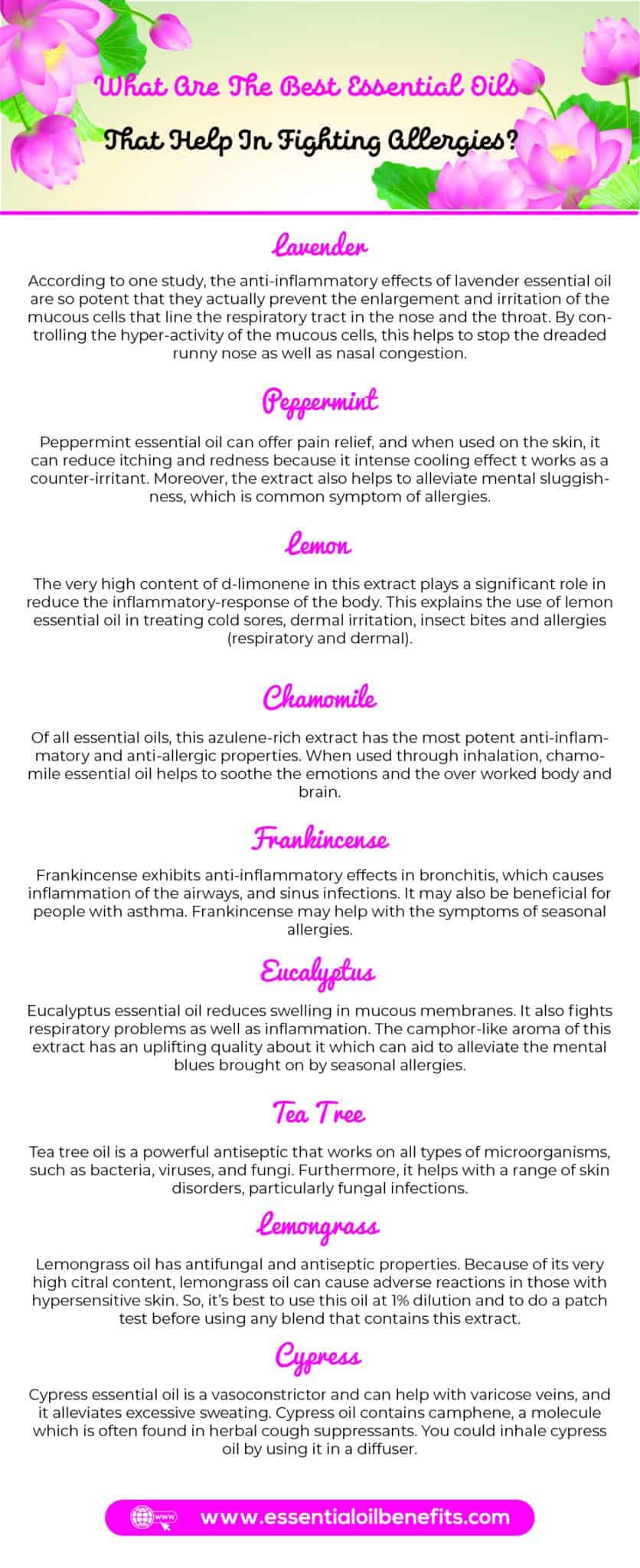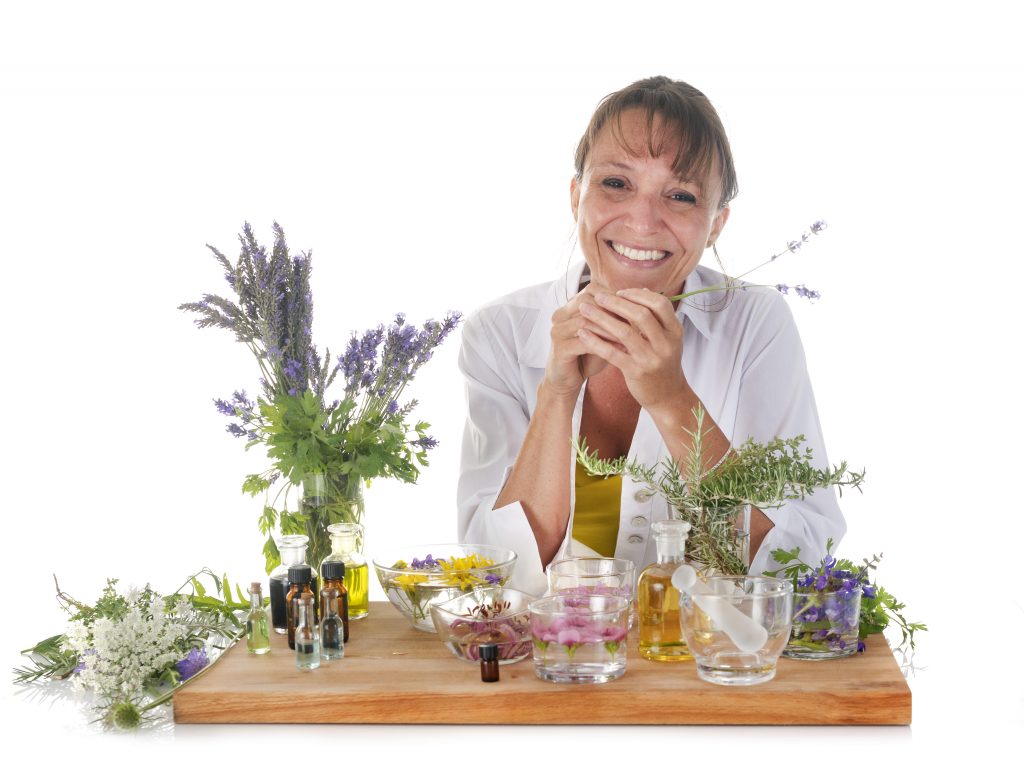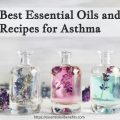Our complex immune systems are the body’s natural defence structure that protects us from evil foreign invaders, such as harmful bacteria and viruses. In fact, so sophisticated is our immune system that it actually has spies on its payroll.
I kid you not folks; these cells known as macrophages and dendritic cells are the body’s very own border security system. Once an invader is detected, it is thoroughly frisked using at least a 6 point system (I am not making this up, really, just simplifying it).
The minute your immune system gets a whiff that an invader has actually dared to enter the body, it quickly initiates a host of retaliatory actions meant to kill this invader. Now, all is good till the immune system gets a bit overzealous in its efforts.
And that my friends is what leads to the notorious and universally dreaded – Allergies. Make no mistake, mes amis; allergies come in different quantities and qualities.
From a life threatening reaction called anaphylaxis to something that is irritating but not dangerous like skin itching and hives and everything in between is ultimately an allergy.
Before you treat allergies, it is important to know just how far your immune system goes in a bid to protect/overprotect your body. In other words, a thorough understanding of how allergies work is a quintessential part of treating this ailment.
And as always, I have you covered on this front! Because this is Olivia’s ultimate guide on tackling allergies, I will start by telling you everything you need to know about allergic reactions and then we will discuss how essential oils can come to your rescue.
Let’s start with the simplest question of the day, but one that needs an in-depth answer.
What’s An Allergy?
An allergy is the result of an inappropriate response to substances in the environment that are normally harmless. Allergies are so common that they affect over 30% of the entire global population.
The cases of allergic diseases also seem to be rising with almost 20% of people in all countries having asthma. The reason why we call allergens typically harmless is because they are not hazardous to people without those specific allergies. For example, allergens could be certain foods, dust, pollen, or even pet dander. We’ll look at a more extensive later on.
Depending on what you are allergic to, the signs and symptoms may vary significantly. Typically, they encompass sneezing, runny nose, swelling, shortness of breath and itching, among others.
The good news is that allergies are absolutely preventable and even treatable. Of course, the management is centered on avoiding the triggers, but there are medications that block the action of the allergens. But to understand this, we need to know how allergic reactions take place.
Why Do We Have Allergic Reactions?
The science behind allergic reactions is quite simple. It’s the primary role of your immune system to keep your body healthy by fighting off any harmful pathogens.
To do this, it acts like the front line of defense – and what’s the best kind of defense? That’s right, a straight up offense. Your immune system protects you by attacking anything that it deems potentially harmful to your body.
Normally, your immune system adjusts to the environment and recognizes things like pollen or pet dander as harmless. But for people with allergies, their immune systems perceive these triggers as threats and starts attacking them. But the reaction is not often immediate.
When people with allergies come into contact with their particular allergen, their systems start building up a sensitivity gradually before finally hitting critical level and overreacting. As your immune system takes time to recognize the allergen, it remembers it and even makes specific antibodies to attack it.
This process is known as sensitization and could take anywhere from days to years. But even before full sensitization, people will experience symptoms like sneezing, inflammation, vomiting, etc.
Recommended Natural Product For Allergies
Are you after something to deal with all types of allergies including seasonal allergy and symptoms such as sneezing, runny nose, irritated eyes, nasal congestion, and itchy nose and throat. Or do you need help with hay fever, pollen, animal fur, mold, yeast,dust, wheat, gluten and dairy allergies. Well, look no further, you can safely try L’orpur all-natural Allergy Relief Spray.
Facts About Allergies
The two images below show 17 facts about allergies.
List Of Common Allergens And Allergy Types
FOOD ALLERGIES
- Milk/Casein and all dairy products
- Eggs
- Soy and tofu
- Wheat
- Nuts including peanuts, walnuts, and all nuts
- Fish and shellfish
- Sulfit
RESPIRATORY ALLERGIES
- Spring and summer allergies
- Fall and winter allergies
- Hay fever or allergic rhinitis
- Mold and pollen
- Dust
- Cat, dog, and pet dander
SKIN ALLERGIES
- Hives and angioedema
- Contact dermatitis
- Poison ivy, sumac, and oak allergies
- Insect stings from bees, hornets, wasps, ants, among others
- Sun and UV radiation
- Nickel allergies
- Cosmetic allergies
OTHER ALLERGENS
- Eye irritants and pink eye
- Drugs i.e. aspirin, penicillin
How To Manage Different Types Of Allergies And Allergenic Triggers?
Winter Allergies
Cold conditions and snowy climate have been blamed for all sorts of respiratory conditions. Unfortunately, it can be quite difficult to tell the difference between a cold and an allergy because they share many symptoms, such as congestion, runny nose and sneezing. But did you know that winter allergies are actually amplified summer allergies?
See, if you’re allergic to things like pet dander, mold, dust mites, and other inhaled summer allergens, being indoors all the time during winter actually intensifies these triggers. With all windows closed, heaters on, and ventilation at a minimum, exposure to allergens spikes up substantially.
Seasonal Allergies / Hay Fever
Happens like clockwork, doesn’t it? As soon as winter’s over and you’ve packed all your sweaters away for spring, your nose starts dripping and eyes start itching with incessant sneezing fits.
Also known as Hay Fever or Allergic Rhinitis, seasonal allergies are typically caused by an immune system reaction to all the pollen released during this time.
In most areas of the US, seasonal spring allergies begin around February and go on until early summer. One of the most common culprits known to trigger seasonal allergies is ragweed.
However, there are plenty of other high pollen plants such as pigweed, sagebrush, cocklebur, burning bush, Russian thistle and Tumbleweed. On a warm, windy day, pollen counts are usually extremely high causing hay fever cases countrywide.
Skin Allergies
Allergies are not just restricted to the respiratory system. Sometimes, they can affect the skin as well. Whether because of food, latex or medication that caused a hypersensitivity of the immune system, you may see red, itchy bumps developing on your skin. Conditions like hives and eczema are closely related to allergies.
With eczema, you get red, dry and irritated skin that can get quite itchy. There might also be fluid filled bumps that ooze a clear liquid or welts caused by hives.
However, contact dermatitis is the most common form of skin allergy. It happens when your skin comes into contact with irritants and allergens like chemicals, soaps, some cosmetics, poison ivy, laundry detergents, adhesives, nail polish, among others.
Dust And Mold Allergies
If you have allergies, then you’re no stranger to bouts of sneezing. And the worst part is, dust allergies don’t often get triggered outside. Oddly enough, they are actually more rampant indoors in the form of dust particles and mites.
The process of cleaning, sweeping, vacuuming and dusting tends to stir up dust and leave the particles in the air. Dust mites are microscopic organisms that feed off moisture and dust.
Dust allergies can trigger asthma and cause eczema to flare up. Mold is also usually not far behind. Since it lives in moist areas like bathrooms and kitchens, an excess of mold spores could also cause an allergic reaction.
Causes Of Allergies
Although almost all the causes of allergies are brought about by triggers, there is a particular antibody called immunoglobin that causes allergic reactions. This IgE antibody causes the production of chemicals which lead to allergic reactions. One of these allergy promoting chemicals is called Histamine, which causes muscle tightness in the airways and blood vessel walls.
But when it comes to what really causes allergies, the risk factors can be grouped into two categories. There are host factors and environmental factors.
We’ve already looked at some of the environmental factors which include pollution, dietary changes, allergen levels and all the environmental triggers we mentioned above. Here, we look at the host factors that cause allergies, with heredity being the most significant.
a) Genetics
Allergic diseases are incredibly familial. In fact, 70% of all identical twins are likely to have the same allergies if any. And if any of the parents have allergies, then high chances are that their children will have more severe allergies than kids without allergic parents.
Likewise, boys also seem to have a higher risk of allergies than girls. Ethnicity also plays a role in some allergies with different genes responsible for asthma in Asian, Hispanic, European and African people.
b) Hygiene Hypothesis
This hypothesis states that children who do not get exposed to dust, allergens, and other infectious agents are more likely to develop allergies and other respiratory conditions at a later age than children who do. In layman terms, we have become too clean for our own good from an early age.
How Can Essential Oils Help With Allergies?
Essential oils can help to ease or eliminate typical allergy symptoms quickly and naturally. It isn’t 100% clear how this happens, but essential oils have strong anti-inflammatory properties and help to soothe itching and irritated tissues. Essential oils also relax constricted airways and reduce mucus production.
Further, essential oils can help prevent new allergy breakouts. Again, we are not 100% sure how this happens, but it some essential oils, such as lavender, have antihistamine properties. Histamine is a substance produced by the body that is involved in the allergic response, and antihistamines neutralize the activity of this substance, effectively preventing a new allergy from breaking out.
Finally, essential oils can help to actually eliminate some of the allergens that might be causing you misery. Some people are allergic to various fungi and spores, and various essential oils are known to have anti-fungal properties. Diffusing these essential oils in an environment clouded with allergy-causing spores can be another way of overcoming your allergies.
Many essential oils also contain expectorant, analgesic, healing, and immune boosting properties that all come together to address almost all the symptoms associated with allergies. This makes them perfect for alleviating symptoms like itchy eyes, stuffed, runny nose, abdominal discomfort, sinus inflammation, hay fever, hives, eczema, among others.
How To Use Essential Oils For Allergies
When it comes to treating allergies, essential oils can be put to good use in a variety of ways. These include:
Topical Application
If you have skin allergies with accompanying symptoms like rashes, itching, hives and inflammation, then applying essential oils topically will work best. Once applied to the skin, the ethereal oils work their way deep into the skin to give users all the healing properties.
However, you should always take caution when using oils topically. Essential oils are incredibly concentrated and if used neat, they could pose an irritation hazard to your skin.
As such, make sure you dilute them down with a carrier oil such coconut, jojoba or olive oil before applying them. When diluting, the correct ratio to follow is to use about an ounce of carrier oil for every 15-20 drops of essential oil blends for frequent use and 20-25 drops for occasional use.
Aromatherapy (Inhalation and Diffusion)
There’s no better way to deal with respiratory allergens than by way of inhalation or aromatherapy. When delivered by way of inhalation, essential oils sneak safely into your system to provide several medical benefits.
Research has already proven that aromatherapy comes with a throng of advantages such as advancing the spiritual, physical and emotional health and well-being.
In addition to direct inhalation where you just put a couple drops of essential oils on a handkerchief and breathe in, you could also use diffusers to get the essential oils airborne and into your system. Just drip a few drops of eucalyptus or peppermint in your diffuser and diffuse as normal.
People with seasonal or chronic allergies could benefit from having a diffuser at hand, especially during spring and summer.
What Are The Best Essential Oils That Help In Fighting Allergies?
Without further ado, here is the list of best essential oils for allergies:
1. Lavender Essential Oil
Lavender is probably the most popular Essential Oil, and there are literally hundreds of uses for it. Due to its antiseptic and anti-inflammatory properties, it is useful in healing cuts, burns, and skin irritations, as well as fighting other skin problems such as acne and bug bites. It soothes nerves and muscle pains.
According to a 2014 study, the anti-inflammatory effects of lavender essential oil are so potent that they actually prevent the enlargement and irritation of the mucous cells that line the respiratory tract in the nose and the throat. By controlling the hyper-activity of the mucous cells, this helps to stop the dreaded runny nose as well as nasal congestion.
2. Peppermint Essential Oil
Peppermint oil is useful in fighting fatigue and depression. It has also been studied scientifically and found to help with restoring the digestive system, and easing symptoms of irritable bowel syndrome.
Peppermint oil can offer pain relief, and when used on the skin, it can reduce itching and redness because it intense cooling effect t works as a counter-irritant. Moreover, the extract also helps to alleviate mental sluggishness, which is common symptom of allergies.
3. Lemon Essential Oil
Lemon essential oil has strong antioxidant and antiseptic properties. It has been found to improve mood and concentration. The very high content of d-limonene in this extract plays a significant role in reducing the inflammatory-response of the body.
This explains the use of lemon oil in treating cold sores, dermal irritation, insect bites and allergies (respiratory and dermal). When including lemon essential oil in any topical blend, it is important to only use steam distilled extract as the cold pressed oil can cause photo toxicity.
4. Chamomile Essential Oil
Chamomile soothes skin irritation, and calms the nervous system. It helps with menstrual problems, and it also has analgesic and anti-allergic properties. In fact, of all essential oils, this azulene-rich extract has the most potent anti-inflammatory and anti-allergic properties.
When used through inhalation, chamomile essential oil helps to soothe the emotions and the over worked body and brain. If your allergies are keeping you up at night, this is definitely the oil to use in the evening.
5. Frankincense Essential Oil
Frankincense comes from the resin of a family of trees native to the Middle East. The bark of the tree is slashed, and the resin that seeps out hardens to form solid drops called tears, which are processed to produce the essential oil. The species of tree used for producing frankincense oil is Boswellia Carteri.
Frankincense exhibits anti-inflammatory effects in bronchitis, which causes inflammation of the airways, and sinus infections. It may also be beneficial for people with asthma and may help with the symptoms of seasonal allergies.
6. Eucalyptus Essential Oil
Eucalyptus essential oil reduces swelling in mucous membranes. It also fights respiratory problems as well as inflammation due to its potent anti-inflammatory properties. It can be used to treat a variety of skin issues, such as cuts, wounds, and infections.
The camphor-like aroma of this extract has an uplifting quality about it which can aid to alleviate the mental blues brought on by seasonal allergies.
7. Tea Tree Essential Oil
Tea tree oil, also known as Melaleuca, is produced from Melaleuca Alternifolia, a large shrub native to the east coast of Australia. Extracted from the leaves of the Melaleuca plant, the oil has long been used as a treatment for wound infections.
It is a powerful antiseptic that works on all types of microorganisms, such as bacteria, viruses, and fungi. Furthermore, tea tree oil helps with a range of skin disorders, particularly fungal infections.
8. Lemongrass Essential Oil
Lemongrass oil can be used as a painkiller. It also has anti-fungal and antiseptic properties. It helps in clearing oily skin and acne, as well as in relieving painful or itchy skin.
The compounds in lemongrass essential oil, namely citral and geranial have potent properties to fight allergic and inflammatory diseases.
Because of its very high citral content, lemongrass essential oil can cause adverse reactions in those with hypersensitive skin. So, it’s best to use this oil at 1% dilution and to do a patch test before using any blend that contains this extract.
9. Cypress Essential Oil
Cypress Essential Oil helps clear oily and congested skin. It is also generally used in a number of other skin care applications. Furthermore, it is a vasoconstrictor and can help with varicose veins, and it alleviates excessive sweating.
Cypress oil contains camphene, a molecule which is often found in herbal cough suppressants. You could inhale cypress oil by using it in a diffuser.
7 Secret Essential Oils Recipes For Allergy Relief
1. The Number One Allergy Fix To Overcome Any Kind Of Allergy Naturally
Essential oils:
- Peppermint
- Lemon
- Lavender
- Almond oil (carrier oil).
Lavender, peppermint and lemon are the most commonly used combination of essential oils to help with allergies. The three oils combine to provide a powerful antihistamine effect as well as to soothe allergy symptoms, and the mixture has helped many people overcome their allergies naturally.
The simplest and safest way to use this combination is to mix 5 drops each of lavender, lemon and peppermint with an ounce of Almond oil. Rub this over your palms, cup your hands over your face, and inhale. Alternately, rub the mixture over your chest and collarbone area.
You should immediately feel relief from most allergy symptoms using this combination of oils. You can generally repeat this procedure 3 times a day until your symptoms begin to disappear.
2. Best Essential Oil Recipe For Sensitive And Irritated Eyes
Essential oils:
- Roman Chamomile
- Frankincense
- Lavender
- Almond oil (carrier oil)
- Glass bottle with metal roll-on filament (optional).
This recipe is meant for applying to sensitive areas of the skin. Peppermint oil in the first recipe might be irritating to the skin around the eye, and lemon oil might cause light sensitivity, which makes it impractical for use.
Instead, the combination of lavender, chamomile, and frankincense work to both reduce the allergy by calming your immune system, as well as to soothe the irritation, itchiness, and swelling that allergies are causing your skin.
The recipe is simple: combine 5 drops of lavender, 4 drops of roman chamomile and 3 drops of frankincense essential oils with an ounce (30 ml) Almond oil. For convenience, I put this into a small glass bottle with a metal roll-on filament that I could then carry around with me.
I simply use this roll-on around my eyes twice a day like I would any eye cream. Just be careful to work away from the lash lines.
3. Not Able To Breathe Properly? Here Is An Essential Oil Recipe For Being Able To Breathe Normally Again
Essential oils:
- Peppermint
- Eucalyptus
- Lemon
- Tea Tree
- Almond Oil (optional)
A congested or runny nose is one of the most common symptoms of allergies. The ingredients in this essential oil recipe help relax and open the airways and soothe the tissues of the nose, throat, and lungs. They also tend to reduce the inflammation of the mucous membranes.
To inhale this blend, mix two drops each of peppermint, eucalyptus, tea tree, and lemon essential oils. Use this for steam inhalation or in a diffuser.
To apply this blend to your skin, use the same amounts of essential oils as for inhalation, but mix this with an ounce of Almond oil. Rub this into your chest and around your collarbones and inhale.
4. Are You Suffering From Evil Spores? Here Is An Essential Oil Recipe For Fighting Evil Spores
Essential oils:
- Lemongrass
- Tea Tree
- Diffuser
Some people have mold allergies, and for these people, mold and fungus can set off typical allergy symptoms such as a runny, stuffed-up nose, itchy and watery eyes, and a rash or hives.
When I was younger, most of my allergies were due to the presence of mold in my house. If you are like me, then this recipe is for you. Lemongrass and tea tree essential oils both have anti-fungal properties that’ll help neutralize the mold in your house, while at the same time giving you some relief from allergy symptoms.
Use 3-5 drops of tea tree oil and the same amount of lemongrass oil in your diffuser. Alternately, if you’ve got an air intake filter in your house, you can drip the same amount of the two essential oils on your filter.
5. Essential Oil Recipe For Getting Rid Of Hives
Essential oils:
- Lavender
- Chamomile
- Almond Oil (carrier oil).
Hives are the red, itchy patches of skin that appear as a result of many allergies. Chamomile and lavender both soothe irritated skin. They will reduce the itchiness, redness, and swelling.
To treat hives with this blend, combine 8-10 drops each of chamomile and lavender essential oils in 20 oz. of warm water. Soak a washcloth in the mixture and gently wipe the affected areas for immediate relief.
Alternately, you can mix 7-8 drops each of the essential oils diluted in an ounce of carrier oil such as Almond, and apply this to the affected areas.
6. Recipe For Clearing Up That Troublesome Sinus
Essential oils:
- Eucalyptus
- Cypress
- Tea Tree
This is another good recipe to help you out if you are fighting congested sinuses that stop you from breathing, give you headaches, and drive you insane.
Eucalyptus and tea tree essential oils have powerful anti-inflammatory effects on the respiratory system, while cypress helps relieve excess body fluids.
For this recipe, you will want to either steam inhale the mixture, or to apply it to the skin on your chest and at the base of your neck.
For inhalation, use 4-5 drops of eucalyptus oil, 4-5 drops of tea tree oil, and 2-3 drops of cypress oil in a bowl of hot water. Cover your head with a towel, and breathe in. Make sure to keep your eyes closed, as they can get irritated from even small amounts of essential oils.
7. Get Relief From That Irritable Itch Now
Essential oils:
- Peppermint
- Lavender
- Almond Oil (carrier oil)
Often, allergies will cause itching even when there is no visible rash. Fortunately, the same essential oils that help with other allergy symptoms can help here also.
Simply dilute 7-8 drops each of lavender and peppermint essential oils in an ounce of almond oil, and gently spread this across the areas that typically begin to itch. The combination of the oils will work to both relieve the irritation you’ve brought on by scratching yourself, as well as to prevent further itching breakouts.
In conclusion…
With a bit of patience and experimentation, essential oils can be extremely helpful with a wide range of issues related to allergies. Once you try them and find a recipe that works well for you, I promise you will get hooked.
However, like with OTC antihistamines, think Cetirizine here, it is crucial to keep things in perspective when it comes to the frequency of use. Most, essential oils are 100% safe as long as you use them as recommended and within their safe dosage and dilution limits.
So, the trick here is to not over-treat yourself. And on that note, I wish you all an Allergy-Free New Year!

